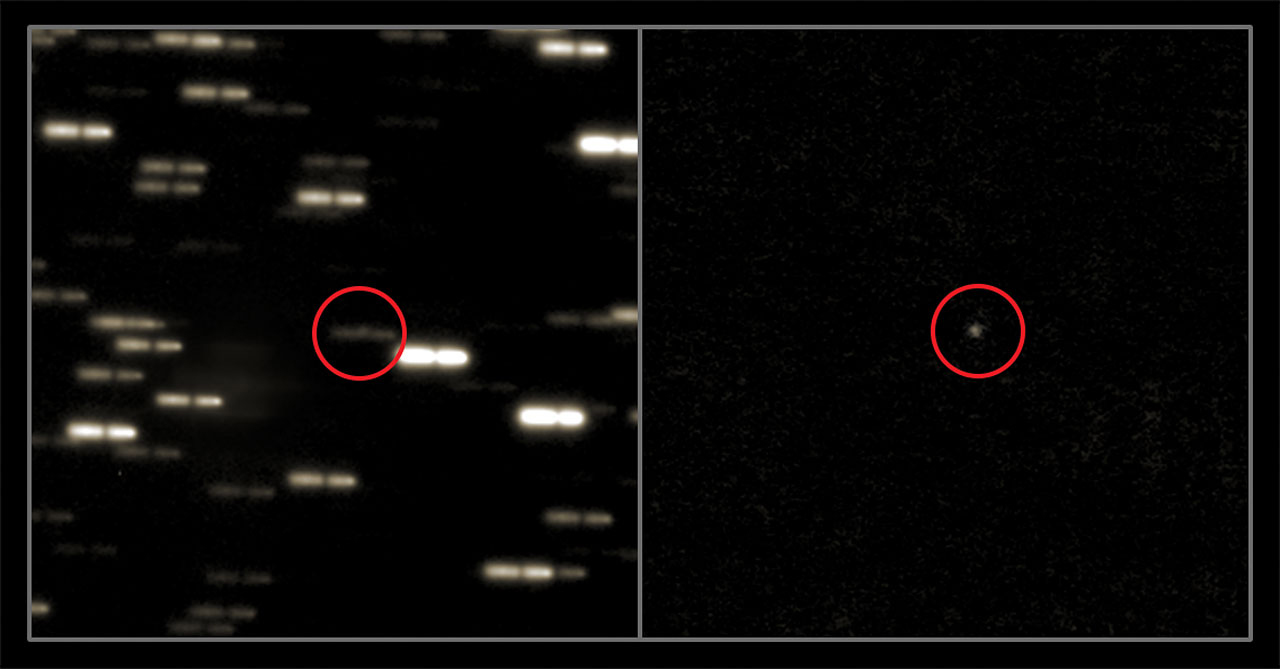Rosetta's Brightening Comet Emerges From Behind the Sun

After its long-awaited awakening on Jan. 20, Europe's Rosetta spacecraft resumed its decade-long journey to meet up with the inbound comet 67P/Churyumov-Gerasimenko, which recently re-emerged from behind the sun as seen from our vantage point on Earth.
PHOTOS: 6 Intimate Comet Encounters
The images above show the comet as seen by ESO's Very Large Telescope (VLT) in Chile on Feb. 28. The left image shows the comet amidst background star trails — the comet itself is actually overlaid onto a star trail — and the right image has had the trails subtracted and the enhanced comet exposures stacked onto a single spot. [Photos: Europe's Rosetta Comet Mission in Pictures]
These are the first observations of 67P/Churyumov-Gerasimenko made by the VLT since October. Since then the 4 kilometer-wide comet has increased in brightness by about 50 percent, indicating that its surface ices may have already begun to sublimate into space.
Hello World: Hibernating Rosetta Comet Probe Awakens
Rosetta and its Philae lander are currently awake and doing well after their nearly two-and-a-half year-long hibernation. Launched in March 2004, this May the spacecraft will rendezvous with the comet and enter orbit around it in August. In November, Philae will land on the comet’s nucleus, performing scientific observations as the comet makes its closest approach to the sun in August 2015.
Want to learn more? Check out the video below from DLR about Rosetta's historic cometary mission:
Get the Space.com Newsletter
Breaking space news, the latest updates on rocket launches, skywatching events and more!
Rosetta will be the first mission ever to orbit a comet’s nucleus and land a probe on its surface. It will also be the first spacecraft to fly alongside a comet as it heads towards the inner solar system, watching how a frozen comet is transformed by the warmth of the sun. Read more about the mission here.
Source: ESA news release
This story was provided by Discovery News.
Join our Space Forums to keep talking space on the latest missions, night sky and more! And if you have a news tip, correction or comment, let us know at: community@space.com.

Jason Major is a big fan of all things to do with astronomy and space exploration. He has a particular love of astrophotography, and he's very good at it too! You can find all of Jason's stellar photographs of the solar system on his website, Lights in the Dark, where he posts space news and images regularly.









